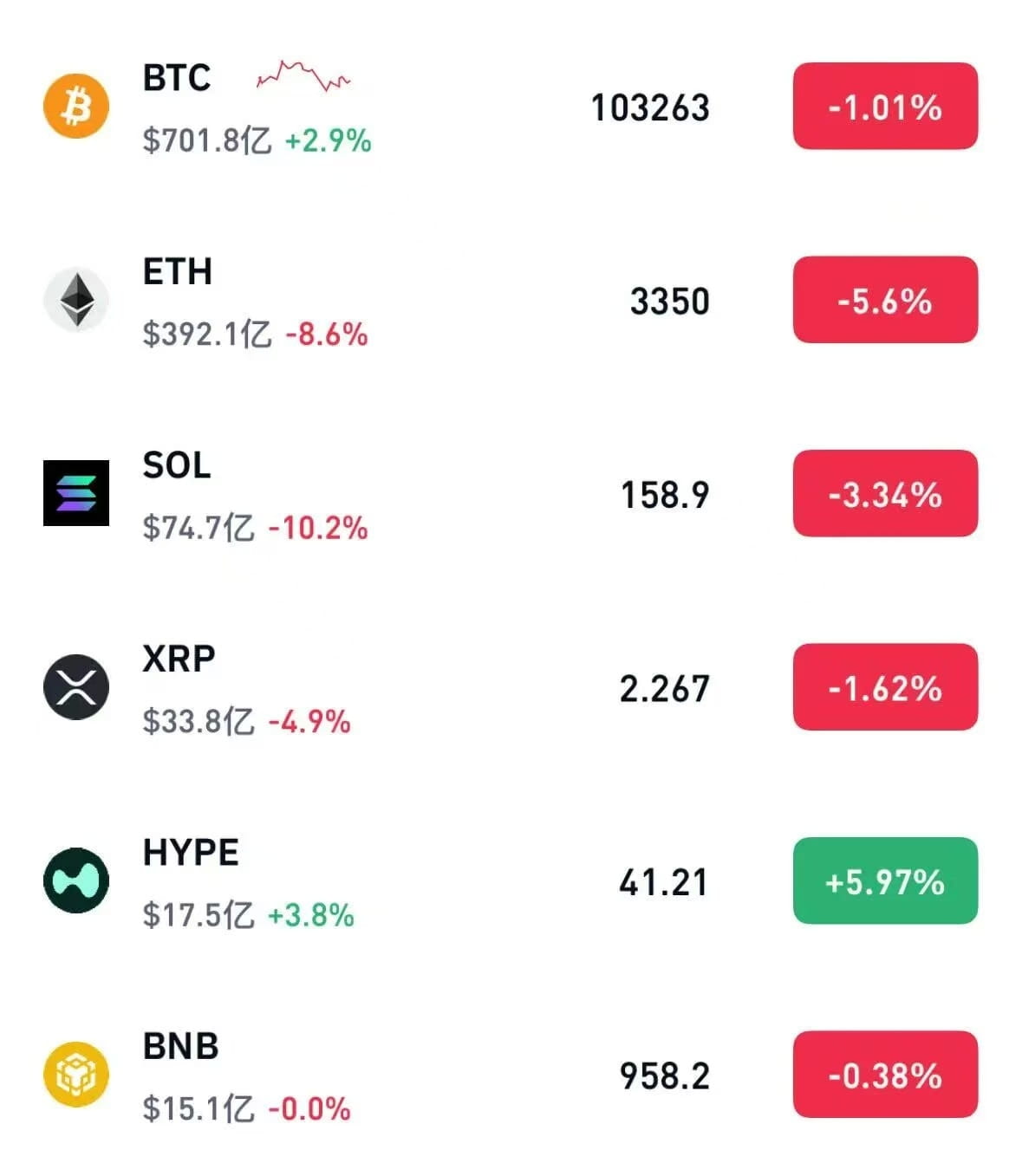After the end of the seven-year rally myth of Bitcoin during the 'Red October', the price is once again under pressure. In the early morning of November 5, its price sharply dropped to $99,008 per coin, marking the first time it has fallen below the $100,000 mark since the end of June. In just one month, Bitcoin's drop exceeded 18%, with the price per coin falling by over $22,400 and the total market value shrinking by over 2.62%, evaporating about $60 billion.

Other cryptocurrencies have fallen even more sharply, with Ethereum dropping over 29% in the month and XRP falling over 25%. As of 5 PM on November 5, over 438,000 people in the global cryptocurrency market had experienced liquidation, with the total liquidation amount reaching $7.3 billion. Compared to the historical high of $126,200 on October 6, Bitcoin's price has fallen over 20%, essentially wiping out all gains from the summer.
This market crash is the result of multiple overlapping factors. On a macro level, U.S. tariff policies and inflation pressures have led to market expectations that the Federal Reserve will maintain high interest rates, causing funds to flow back into dollar assets, resulting in a simultaneous decline in global risk assets. Previously, the AI bull market in U.S. stocks had a siphoning effect on capital in the crypto market, and the recent plunge in U.S. stocks has further exacerbated capital rotation, with investors even withdrawing funds from the crypto market to cover losses in the stock market.
The 'epic liquidation' on October 11 became a watershed moment, with nearly $20 billion in cryptocurrency bets being forcibly liquidated that day, affecting over 1.6 million traders. This large-scale liquidation led to a collapse in market liquidity and confidence, with institutional demand for Bitcoin dropping below the speed of new coin mining for the first time in nearly seven months, resulting in insufficient existing funds and little upward momentum in the short term.
The market has currently shifted from a price crisis to a trust crisis, with market-making institutions being damaged, quantitative funds reducing risk exposure, and the trading ecosystem contracting, affecting pricing mechanisms for futures and stablecoins. Experts point out that the crypto market may face a prolonged consolidation period, and whether Bitcoin can break through a turning point depends on the flow of funds and the restoration of confidence, rather than a single technical price level. The current technical indicators show signs of short-term stabilization, but trading activity is insufficient, lacking sustained upward momentum.
Regarding future trends, the fourth quarter is likely to see a mix of bullish and bearish factors, with institutional demand and interest rate cut expectations expected to boost the market, but tightening regulation and increased industry competition will suppress the upward trend. Key support levels are crucial; if it fails to hold at $98,000, it may test the $90,000-$74,000 range, or even adjust further down to the $60,000-$70,000 area. However, in the long term, as high-leverage funds clear out, the logic for spot ETFs and compliant institutions entering the market remains unchanged, and the industry still views Bitcoin's mid-to-long-term performance positively. #美国加征关税 $ETH$BTC



